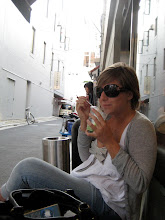Having recently had the opportunity to further study the European context of urban planning and heritage it brought me back to think about Australia, my current home. Australia is of course much younger and less developed than the highly historic European cities I focused on however heritage is something that is present in Australian society as well.
Europe has a great history and therefore has an incredible amount of heritage to consider when planning. A vast part of the built environment in major European cities, if not destroyed in the war, has a history of hundreds of years. Different periods in history have left their mark, their architectural style, their industrial space, which planners are faced to consider and incorporate in future planning and development.
Australia on the other hand, due to its youth, must not forget or overlook its history and its heritage. Whether it be abandoned industrial land, old ports, landscape or architecure, it should be considered and used to enhance the identity of space to create vibrant and meaningful cultural places.
An example of successful rehabilitation of heritage in Sydney's Paddington suburb is the Paddington Resevoir Development. The original Paddington Resevoir was built between 1866 and 1878 and was a key element in Sydney's early water supply. Through history it evolved into a garage and workshop for the Metropolitan Water, Sewerage and Drainage Board in 1899, later a service station, and in 1934 it was aquired by the Paddington Municipal Council and leased as a commercial garage. By 1991 the area was unused and closed off to the public due to the quality and state of the old building.
The City of Sydney has successfully restored an area of industrial heritage by rehabilitating the Paddington Reservoir Gardens and creating new space and cultural facility. The skeleton structure of the site has been preserved and incorporated in the design providing character of the precincts heritage. The City of Sydney was presented with the 'Australian Award for Urban Design' in 2009 for demonstrating excellence and innovation in the built environment.
Good urban design can play a critical role in the evolution of our ever transforming cities, and heritage is a criteria that should be consistently considered and incorporated in urban planning to contribute to enhancing a cultural identity and creating meaningful public spaces.
Photos of Paddington Reservoir:



 Graz Art Museum, Austria
Graz Art Museum, Austria


